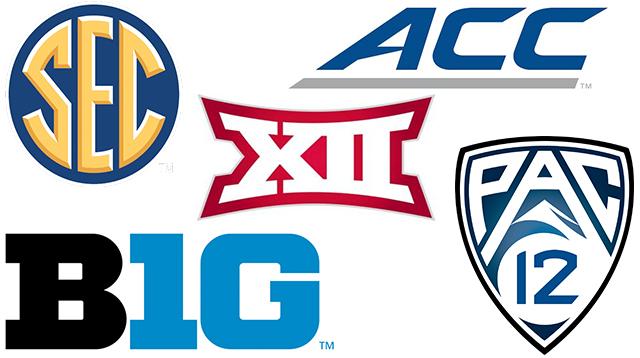Gil Lebreton: Power Five Conferences All Have It Wrong On Title Games
June 2, 2015
By Gil Lebreton
Being competitive dudes and manly men, the football coaches and athletic directors of the Big 12 Conference convened in Phoenix last week to reassert their collective place in the post-BCS world.
And this is what they came up with:
Tiebreaker rules.
What a waste of testosterone.
The one league among the Power Five that was wronged and left out of the first College Football Playoff chose not to — once and for all — call the committee’s bluff. It didn’t even present a list of “talking points” to unmask the CFP voters for the biased frauds they eventually turned out to be.
No, the Big 12 big dogs came up with tiebreakers. Including No. 4, which apparently is drawing one team’s name out of Bob Bowlsby’s favorite hat.
At the end of the meetings, Commissioner Bob presented the tiebreaker rules in lieu of an expected vote in favor of adding a conference championship game.
As Bowlsby explained: “One year is not a long enough trial to draw conclusions.
“I think we might find ourselves in better shape as a result of our model, not in spite of our model.”
Bowlsby commended the coaches and ADs for being “pretty thoughtful” and not voting with the same raw emotions that a few displayed last December.
OK. But that’s all they got? Tiebreakers?
And even there, the schools got it wrong.
Here’s why:
The first tiebreaker is which team won when the two teams played head-to-head. The Baylor argument, and it’s valid to a point.
But that doesn’t mean that the conference’s best team will be decided on the field. It means that more often than not, the Big 12 title will now be decided in the spring, when the schedule is announced and Baylor, TCU, Texas or whoever gets to see who plays its big game at home.
To be fair, a head-to-head tiebreaker should be determined on a neutral field.
Could TCU have beaten Baylor at the end of last season, as Horned Frogs supporters insisted? In Fort Worth, probably. But a rematch at a neutral site — in Arlington or Houston — would have been highly entertaining.
That horse has already been flogged to death, of course. Don’t misconstrue the neutral-site argument, however, as a vote in favor of adding a conference title game.
Not yet, at any rate.
Why should the Big 12, alone among the Power Five conferences, guarantee that one of its two best teams will be tagged with another defeat on the most important weekend of the season? Everyone else is still selling division-against-division tickets.
Our old friends at the Mountain West Conference, not a part of the Power Five, have the right idea. They want to match their two best teams, not necessarily their two division winners, in the MWC title game.
The Atlantic Coast Conference has also talked about doing this. The idea is to enhance the résumé of the team that emerges victorious.
If a league’s two most worthy title game opponents had been chosen on merit and not on geography, we wouldn’t have had things like the 2005 Big 12 championship game — Texas 70, Colorado 3. A 9-2 15th-ranked Texas Tech team would be a been a more worthy foe.
The Southeastern Conference, flexing its then-new 12-team muscle, staged the first league championship game in 1992. The game has become a tradition, with accompanying festivities and nods to history.
But the old division format has grown stale and somewhat irrelevant.
I don’t blame the Big 12 ADs for not wanting to go first. Let the new tiebreaker rules determine only the regular season’s paper champion.
But make each conference match its two highest ranked teams — at a neutral site — in its league title game.
In that way, they would all each have One True Champion.
No talking points necessary.










